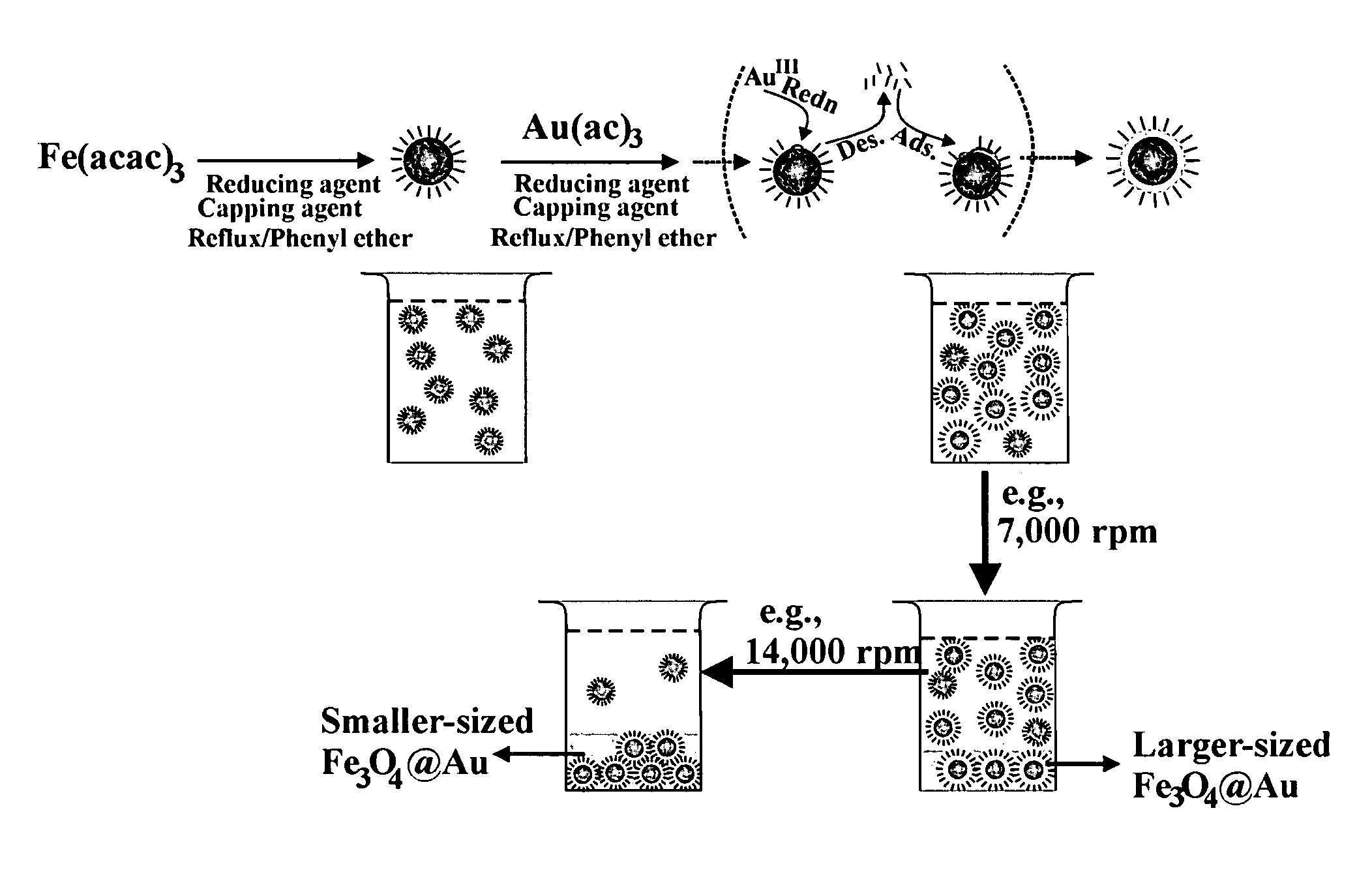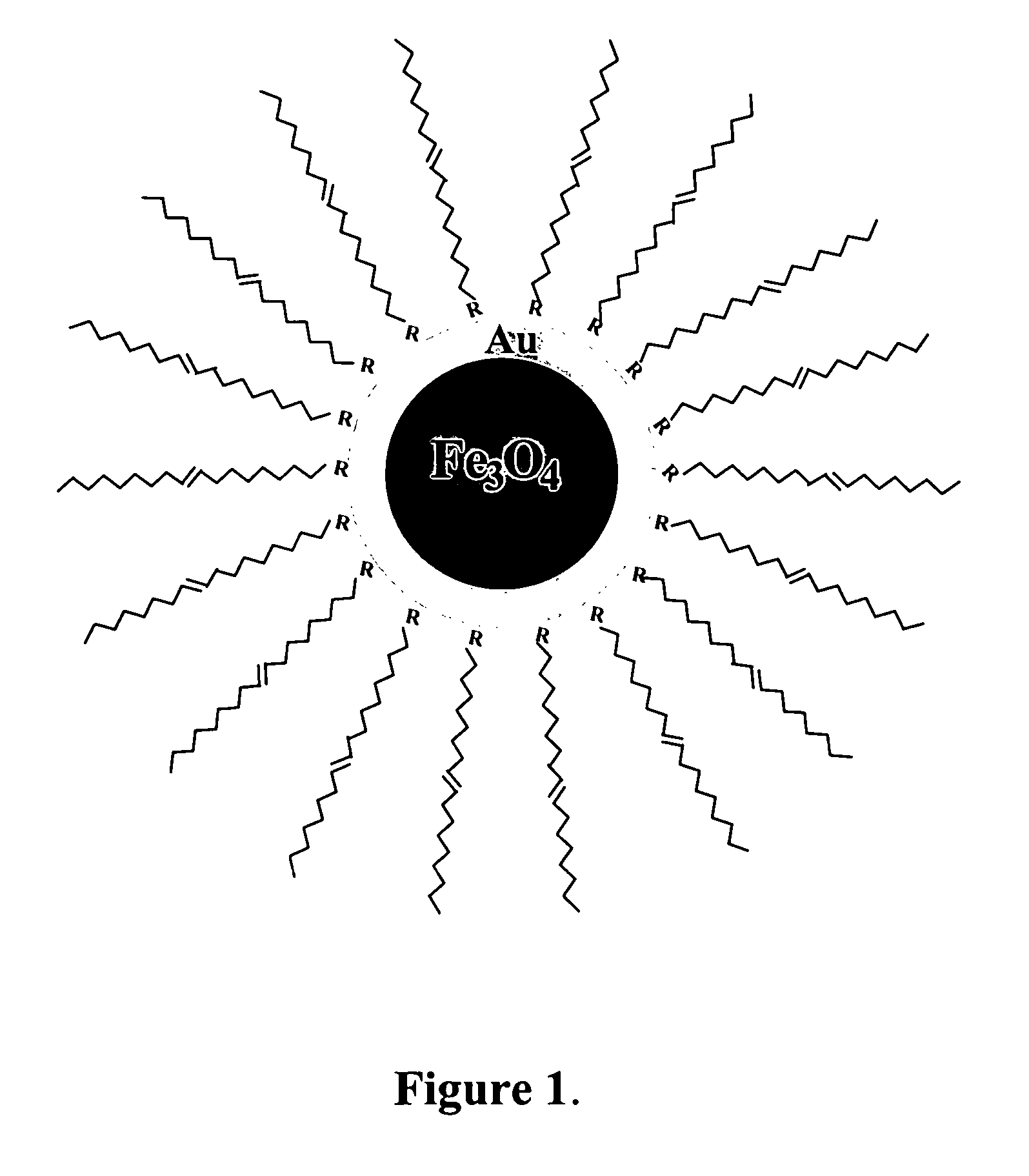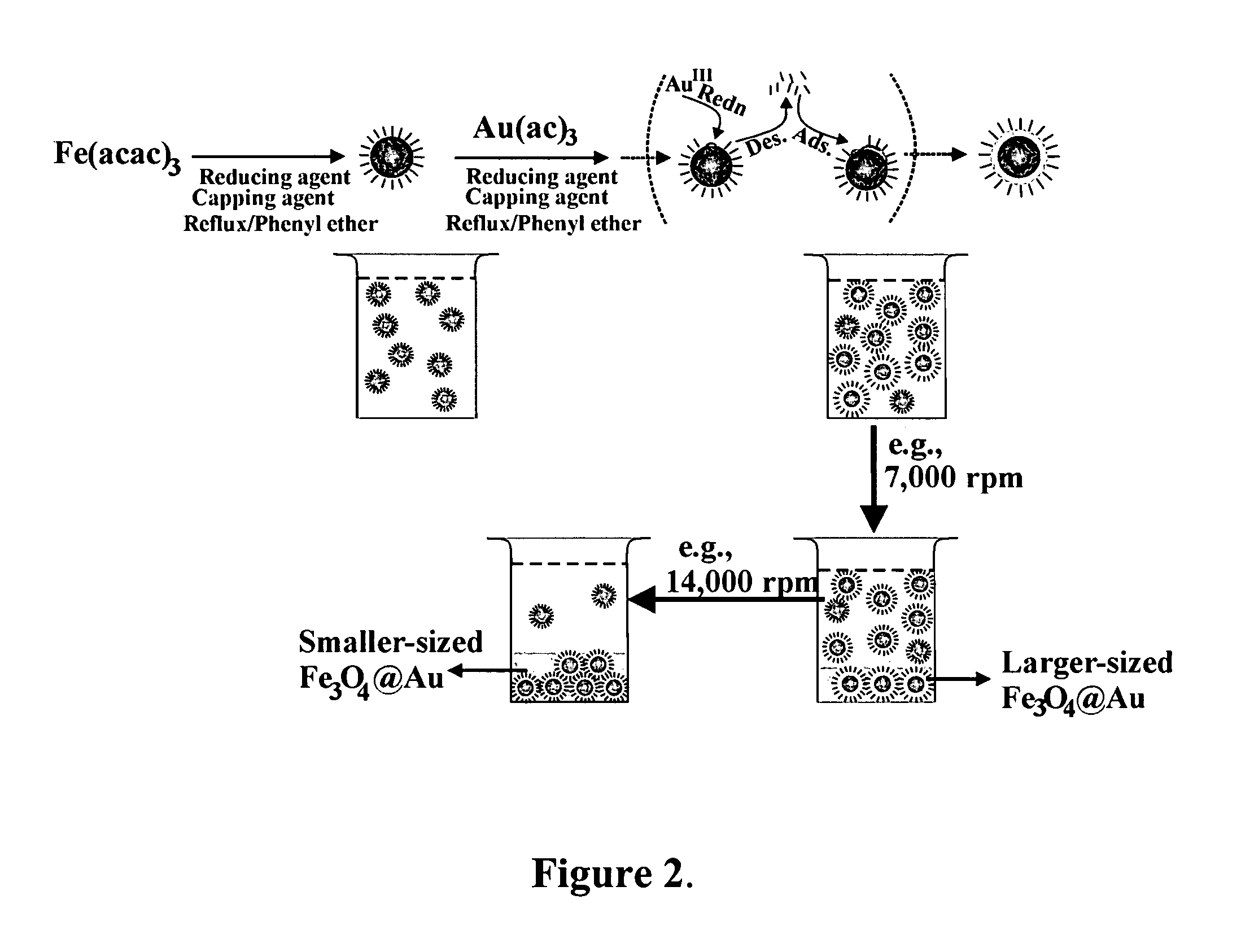Method of forming iron oxide core metal shell nanoparticles
a technology of iron oxide and core metal shell, which is applied in the direction of metal/metal-oxide/metal-hydroxide catalyst, ferroso-ferric oxide, etc., can solve the problems of not fully encapsulating the magnetic core, the size of the fe-oxide core/metal shell nanoparticle, and the variability in the thickness of the shell
- Summary
- Abstract
- Description
- Claims
- Application Information
AI Technical Summary
Benefits of technology
Problems solved by technology
Method used
Image
Examples
example 1
[0040]Iron(III) acetylacetonate (Fe(acac)3, 99.9%), 1,2-hexadecanediol (C14H29CH(OH)CH2(OH), 90%), oleylamine (OAM, C9H18═C9H17NH2, 70%), oleic acid (OA) (C9H19═C9H15COOH, 99%), phenyl ether (C12H19O, 99%), 1,9-nonanedithiol (NDT) (SHC9H18SH, 95%), 11-mercaptoundecanoic acid (MUA) (SHC11H22CO2H, 95%), and other solvents (hexane and ethanol) were purchased from Aldrich. Gold acetate (Au(OOCCH3)3, or Au(Ac)3, 99.9%) was purchased from Alfa. All chemicals were used as received.
[0041]The preparation of Fe3O4 / Au involved an initial synthesis of Fe3O4 nanoparticles as seeds and a subsequent reduction of Au(OOCCH3)3 in the presence of the seeds. Fe3O4 nanoparticles seeds were synthesized using a modified protocol. Briefly, 0.71 g Fe(acac)3 (2 mmol) was mixed in 20 mL phenyl ether with 2 mL oleic acid (˜6 mmol) and 2 mL oleylamine (˜6 mmol) under argon atmosphere with vigorous stirring. 2.58 g 1,2-hexadecanediol (10 mmol) was added into the solution. The solution was heated to 210° C. and r...
example 2
[0054]The method of Example 1 was repeated except that the reflux time in the preparation of the Fe3O4 core seed was reduced from 2 hours to 1.5 hours. The average core seed diameter decreased from 5.2 nm to 4.5 nm. The size of the coated Fe3O4 / Au nanoparticles obtained after the final centrifugation also decreased. These are shown in FIGS. 5a and 5b. The average coating thickness increased from 0.7 nm of example 1 to 0.9 nm.
[0055]XRD spectra from the uncoated and coated samples are shown in FIG. 7. The diffraction patterns of (a) Fe3O4 before coating (b) pure Au and (c) Fe3O4 / Au coated nanoparticles are compared. The absence of Fe3O4 peaks in the coated sample further confirms that the Au-shell completely covers the core.
[0056]FIG. 6 shows a typical set of UV-Vis spectra comparing Fe3O4 (a) and Fe3O4 / Au (c, d) nanoparticles dispersed in hexane solution. In contrast to the largely silent feature in the visible region for Fe3O4 particles, Fe3O4 / Au particles show a clear SP band at 53...
example 3
[0057]In a process similar to that in Example 1, γ-Fe2O3 core seeds were formed by oxidation of Fe(CO)5. With γ-Fe2O3 cores, a hexane solution of the core nanoparticles was mixed with phenyl ether and a solution of Au(OOCCH3)3 with oleic acid, oleylamine and 1,2-hexadecanediol. After reaction under heating, the mixture was cooled down to room temperature. The rest of the preparation steps were the same as the synthesis of Fe3O4 / Au. The thickness was controlled by adjusting the ratio between the gold precursor and the core seeds. The average yield to the formation of gold shell was about 90%.
PUM
| Property | Measurement | Unit |
|---|---|---|
| Size distribution | aaaaa | aaaaa |
| Diameter | aaaaa | aaaaa |
| Diameter | aaaaa | aaaaa |
Abstract
Description
Claims
Application Information
 Login to View More
Login to View More - R&D
- Intellectual Property
- Life Sciences
- Materials
- Tech Scout
- Unparalleled Data Quality
- Higher Quality Content
- 60% Fewer Hallucinations
Browse by: Latest US Patents, China's latest patents, Technical Efficacy Thesaurus, Application Domain, Technology Topic, Popular Technical Reports.
© 2025 PatSnap. All rights reserved.Legal|Privacy policy|Modern Slavery Act Transparency Statement|Sitemap|About US| Contact US: help@patsnap.com



